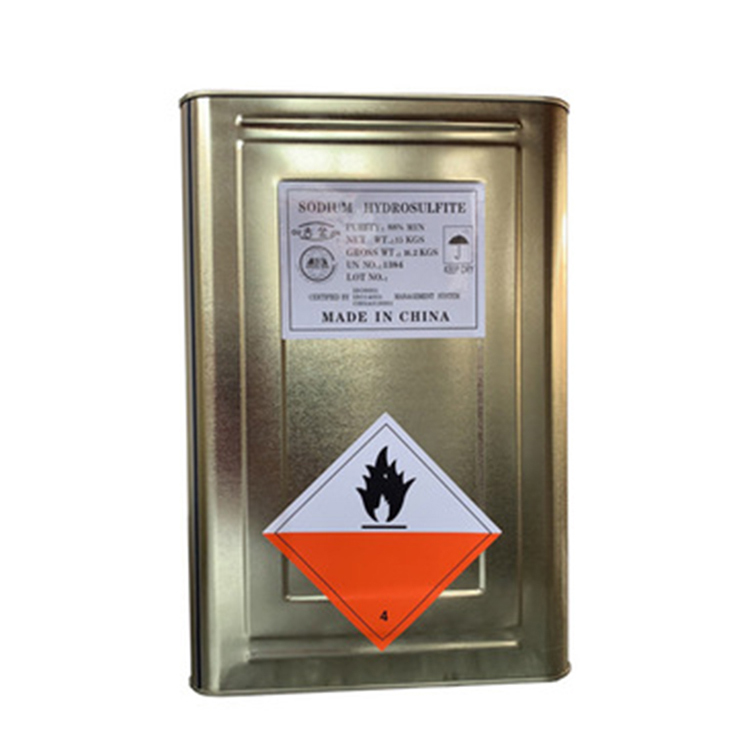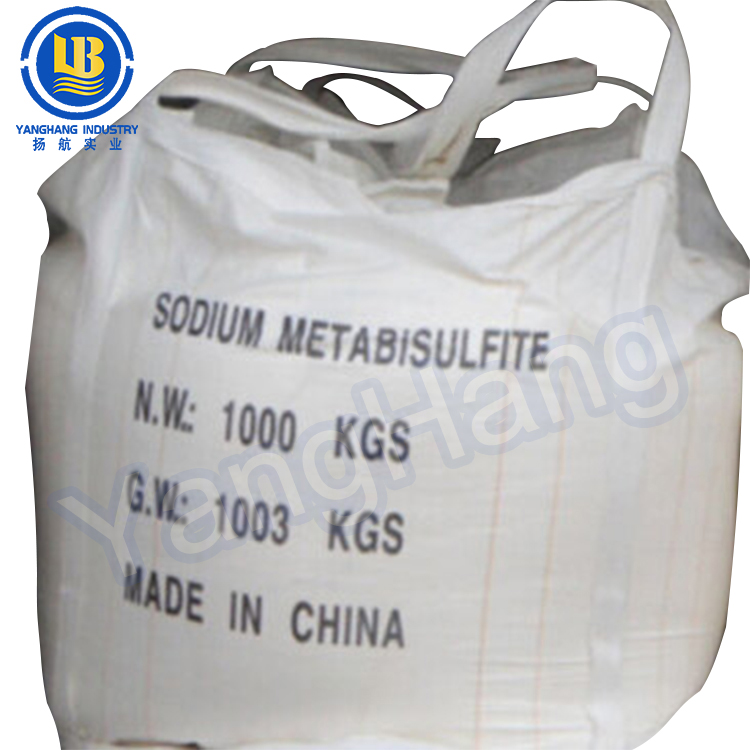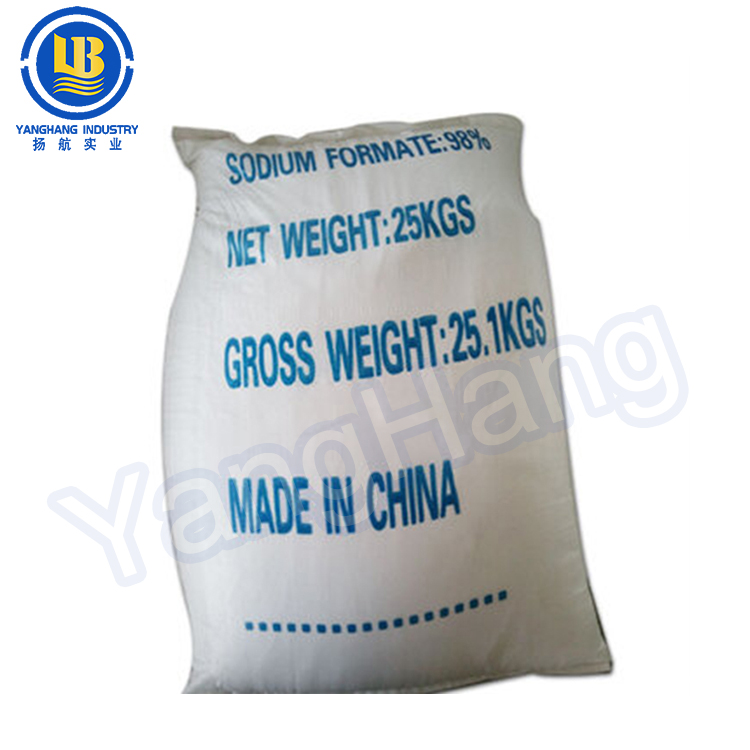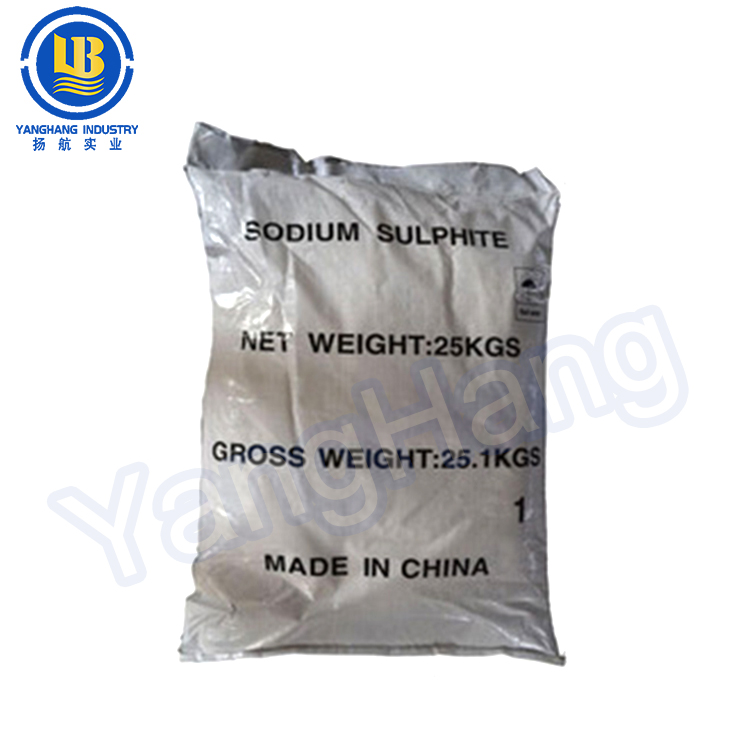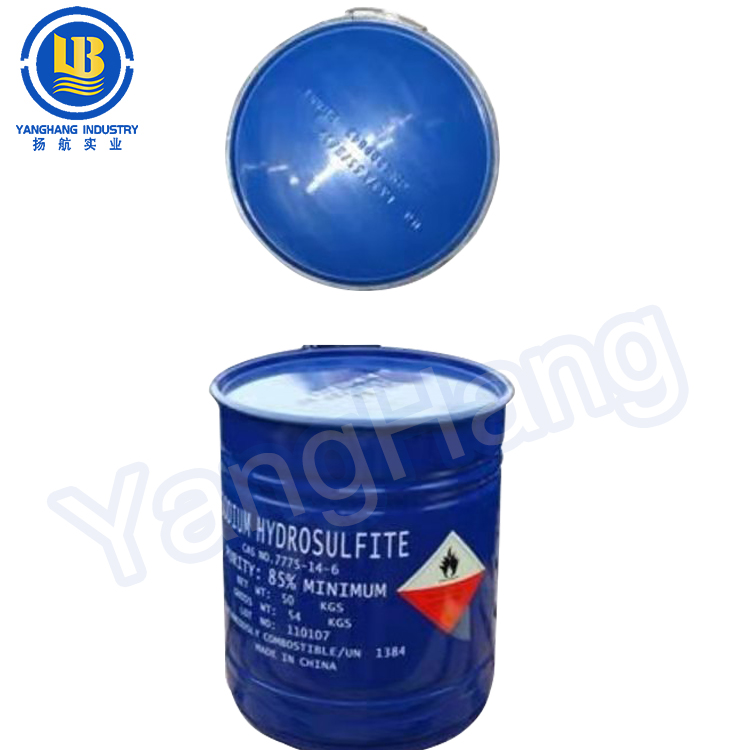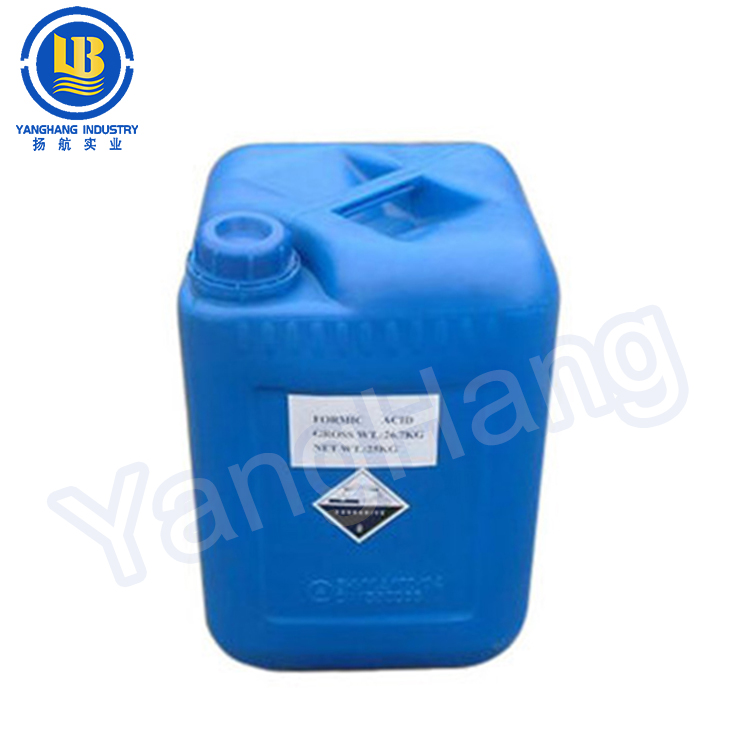Hainan Yanghang Industrial Co., Ltd.
34 years of focusing on R&D, production and sales of water treatment chemical products
 info@hnyhxd.com
info@hnyhxd.com
Sodium hydrosulfite
Sodium hydrosulfite, also known as hydrosulfite, is an inorganic substance with the chemical formula Na2S2O4, which is a white crystalline powder.
Chemical formula: Na2S2O4
Molecular weight: 174.108
CAS Number: 7775-14-6
EINECS Number: 231-890-0
Melting point: 300 ℃
Boiling point 1390 ℃
Water solubility: very soluble in water, almost insoluble in ethanol
Density: 2.189 g/cm3
Appearance: white monoclinic crystal
Use:
It is widely used in reductive dyeing, reductive cleaning, printing and decolorization in the textile industry, as well as bleaching of silk, wool, nylon and other fabrics [3]. Because it does not contain heavy metals, the bleached fabrics are very bright in color and not easy to fade. In terms of various substances, it can also be used for food bleaching, such as gelatin, sucrose, candied fruit, and bleaching of soap, animal (vegetable) oil, bamboo ware, and porcelain clay. It can also be used in organic synthesis, such as the production of dyes and pharmaceuticals as a reducing agent or bleaching agent. Sodium hydrosulfite is the most suitable bleaching agent for wood pulp and papermaking.
Danger:
Hazard category: low toxicity, median lethal dose (rat, oral) 2000mg/kg.
Health Hazards: Irritating to skin, eyes and respiratory tract, can cause allergic reactions. Can cause corneal damage, leading to blindness. Can cause asthma; a large amount of oral intake can cause nausea, abdominal pain, diarrhea, circulatory failure, central nervous system depression.
Environmental Hazards: Harmful to the environment and can cause pollution to water bodies.
Explosion Hazard: This product is non-flammable, corrosive, and can cause burns to the human body.
First-aid:
Flammable: Flammable items in contact with water or moisture refer to items that undergo a violent chemical reaction and release a large amount of flammable gas and heat. Some items can burn or explode without an open flame. It is usually divided into two levels: first-level flammable items in contact with moisture and second-level flammable items in contact with moisture. According to the national standard GB6844-86 "Classification and Product Name Number of Dangerous Goods", sodium hydrosulfite belongs to the first-class flammable goods when wet. After contact with water, a chemical reaction occurs, and the reaction is violent, producing combustible gas hydrogen sulfide and sulfur dioxide, and releasing a lot of heat. The reaction equation is: 2Na2S2O4+2H2O+O2=4NaHSO3, and the product further reacts to generate hydrogen sulfide and sulfur dioxide. Sodium dithionite, because the sulfur in its composition belongs to the intermediate valence state, is not stable in chemical properties, and exhibits strong reducing properties. The two will undergo a redox reaction, which is violent and releases a lot of heat and toxic substances. The reaction equation is: 2Na2S2O4+4HCl=2H2S2O4+4NaCl
The generated hydrosulfuric acid is very unstable, and the decomposition reaction occurs rapidly. There is a large amount of toxic gas sulfur dioxide in the product. The reaction equation is: 2H2S2O4=S+2H2O+3SO2↑
Spontaneous combustion: Sodium hydrosulfite has a spontaneous ignition point of 250°C. Because of its low ignition point, it is a first-class flammable solid (the ignition point is generally below 300°C, and the flash point of the low melting point is below 100°C). It is very easy to encounter heat, fire, friction and impact. Combustion, the burning speed is fast, and the fire danger is high. The gaseous hydrogen sulfide gas generated during the combustion process may also cause a larger burning area and increase its fire danger.
Explosion: Sodium dithionite is a light yellow powdery substance, which is easy to form an explosive mixture in the air, and a dust explosion occurs when it encounters a fire source. The mixture composed of perchlorate or permanganate has the danger of explosion. Even in the case of containing moisture, it will explode after a little friction or impact, especially after thermal decomposition, the flammable gas generated after the reaction, When the flammable gas reaches the explosion limit, the risk of explosion is even greater.
Poison: Sodium dithionite itself is a toxic substance, which is irritating to human eyes and respiratory mucosa. Once it burns or explodes in contact with water, most of the products generated after combustion are toxic gases, such as hydrogen sulfide, Sulphur dioxide.
Skin Contact: Remove contaminated clothing and rinse skin thoroughly with soap and water.
Eye Contact: Lift eyelids, rinse with running water or saline, seek medical attention.
Inhalation: Quickly leave the scene to fresh air. Keep the airway open. If breathing is difficult, give oxygen. If breathing stops, give artificial respiration immediately and seek medical attention.
Ingestion: Drink enough warm water to induce vomiting. seek medical attention.
Strong reducing agent. It can spontaneously ignite at 250°C. Combustible by heating or contact with open flame. It will be oxidized and deteriorated when exposed to air. In contact with water, acids or organic matter and oxidants, it can release a lot of heat and cause violent combustion and release sulfur dioxide.
Hazardous Combustion Products: Sulfide.
Storage Notes:
Store in a cool, ventilated warehouse. The relative humidity is kept below 75%. The packaging is required to be sealed and not in contact with the air. It should be stored separately from oxidants, acids, and combustibles, and should not be mixed. Use explosion-proof lighting and ventilation facilities. Prohibit the use of mechanical equipment and tools that are prone to sparks. Storage areas should be provided with suitable materials to contain spills.

